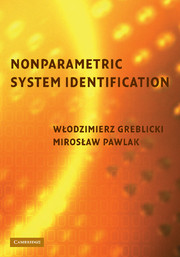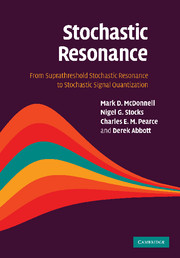Refine search
Actions for selected content:
6778 results in Communications and signal processing
4 - Steganographic channel
-
- Book:
- Steganography in Digital Media
- Published online:
- 05 April 2014
- Print publication:
- 12 November 2009, pp 47-58
-
- Chapter
- Export citation
References
-
- Book:
- Steganography in Digital Media
- Published online:
- 05 April 2014
- Print publication:
- 12 November 2009, pp 409-426
-
- Chapter
- Export citation
Notation and symbols
-
- Book:
- Steganography in Digital Media
- Published online:
- 05 April 2014
- Print publication:
- 12 November 2009, pp 377-386
-
- Chapter
- Export citation
Contents
-
- Book:
- Steganography in Digital Media
- Published online:
- 05 April 2014
- Print publication:
- 12 November 2009, pp vii-xiv
-
- Chapter
- Export citation
Glossary
-
- Book:
- Steganography in Digital Media
- Published online:
- 05 April 2014
- Print publication:
- 12 November 2009, pp 387-408
-
- Chapter
- Export citation
Acknowledgments
-
- Book:
- Steganography in Digital Media
- Published online:
- 05 April 2014
- Print publication:
- 12 November 2009, pp xxiii-xxiv
-
- Chapter
- Export citation
2 - Digital image formats
-
- Book:
- Steganography in Digital Media
- Published online:
- 05 April 2014
- Print publication:
- 12 November 2009, pp 15-32
-
- Chapter
- Export citation
B - Information theory
-
- Book:
- Steganography in Digital Media
- Published online:
- 05 April 2014
- Print publication:
- 12 November 2009, pp 313-324
-
- Chapter
- Export citation
A - Statistics
-
- Book:
- Steganography in Digital Media
- Published online:
- 05 April 2014
- Print publication:
- 12 November 2009, pp 293-312
-
- Chapter
- Export citation
13 - Steganographic capacity
-
- Book:
- Steganography in Digital Media
- Published online:
- 05 April 2014
- Print publication:
- 12 November 2009, pp 277-292
-
- Chapter
- Export citation
D - Signal detection and estimation
-
- Book:
- Steganography in Digital Media
- Published online:
- 05 April 2014
- Print publication:
- 12 November 2009, pp 335-362
-
- Chapter
- Export citation

Nonparametric System Identification
-
- Published online:
- 06 November 2009
- Print publication:
- 16 June 2008

Stochastic Resonance
- From Suprathreshold Stochastic Resonance to Stochastic Signal Quantization
-
- Published online:
- 23 October 2009
- Print publication:
- 02 October 2008
Appendix C - Decoding of Reed–Solomon code in F (16)
-
- Book:
- Two-Dimensional Information Theory and Coding
- Published online:
- 05 June 2012
- Print publication:
- 15 October 2009, pp 163-169
-
- Chapter
- Export citation
7 - Laplacians
-
- Book:
- An Introduction to the Theory of Graph Spectra
- Published online:
- 23 February 2011
- Print publication:
- 15 October 2009, pp 184-227
-
- Chapter
- Export citation
6 - Spectral techniques
-
- Book:
- An Introduction to the Theory of Graph Spectra
- Published online:
- 23 February 2011
- Print publication:
- 15 October 2009, pp 162-183
-
- Chapter
- Export citation
3 - Channels and linear codes
-
- Book:
- Two-Dimensional Information Theory and Coding
- Published online:
- 05 June 2012
- Print publication:
- 15 October 2009, pp 36-53
-
- Chapter
- Export citation
Frontmatter
-
- Book:
- Two-Dimensional Information Theory and Coding
- Published online:
- 05 June 2012
- Print publication:
- 15 October 2009, pp i-iv
-
- Chapter
- Export citation
2 - Finite-state sources
-
- Book:
- Two-Dimensional Information Theory and Coding
- Published online:
- 05 June 2012
- Print publication:
- 15 October 2009, pp 17-35
-
- Chapter
- Export citation
Appendix A - Fast arithmetic coding
-
- Book:
- Two-Dimensional Information Theory and Coding
- Published online:
- 05 June 2012
- Print publication:
- 15 October 2009, pp 158-159
-
- Chapter
- Export citation
